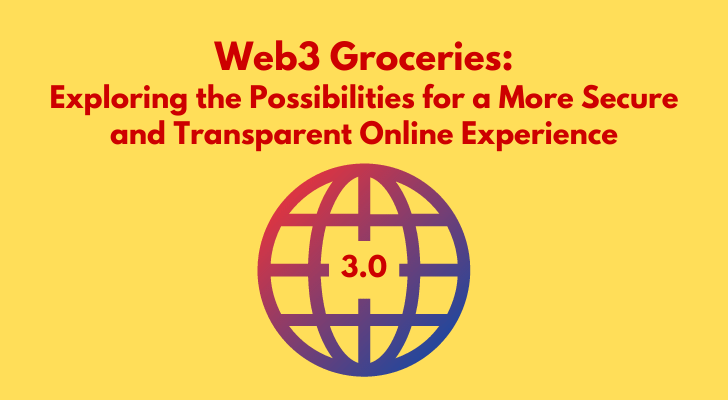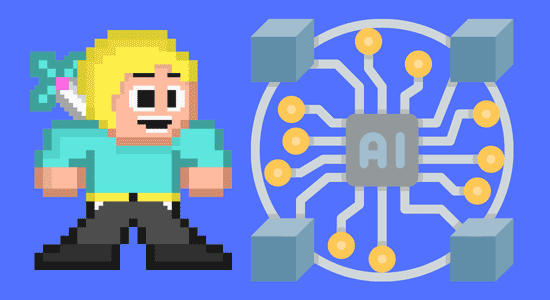The emergence of Web3 has brought a new era that promises to revolutionize online experiences by offering increased security and transparency. From blockchain-based social media platforms to decentralized marketplaces, I think Web3 is opening up endless possibilities for me and my business. I’ll delve into the exciting world of Web3 and its potential to transform my online life for good. Join me as I explore what this new paradigm shift means for you and how you can leverage it to stay ahead in an increasingly digital world!

What is Web3?
Web3, or Semantic Web, is the third generation of web technology, which enables a more secure and transparent online experience. It is based on the principles of decentralization, security, and privacy. Web3 technology allows for a more decentralized web, where users can interact with each other directly without the need for intermediaries.
This enables a more secure and transparent online experience, as well as greater control over one's personal data. Web3 also enables new applications that were not possible before, such as decentralized exchanges, social networks, and gaming platforms.
Web 1-2-3
- Web 1.0 is known as the static web, which consists of websites that are built with HTML and cannot be changed by the user.
- Web 2.0 is an interactive type of web where users can interact with each other on social media networks, blogs, and wikis.
The current web (web2) is based on a centralised architecture, where a few large companies control most of the data and traffic.
- Users are in control of their own data and traffic. This makes it much more secure and transparent, as there is no single point of failure.
- Web3 is designed to be censorship-resistant, meaning that no one can block or censor content on the network.
- It uses artificial intelligence to provide a more personalized experience for users by understanding their preferences and providing relevant information to them based on those preferences.
- It also allows for machine-to-machine communication for automation purposes such as online shopping recommendations or customized search results.
Examples of Web3
Blockchain
Blockchain and web3 are technologies that are transforming the way we interact with the internet. Blockchain is a distributed ledger technology that allows users to securely store and transfer data in a secure, decentralized environment.
Web3 is an open source protocol that enables developers to build applications which leverage blockchain technology for authentication and authorization of transactions, allowing for faster transactions with a less manual effort from individuals or companies.
Together, these two technologies enable new business models by facilitating more efficient ways of exchanging assets, tracking the provenance of assets, ensuring data integrity, and providing immutable storage.
Non-Fungible Tokens (NFTs)

Non-Fungible Tokens (NFTs) are a type of cryptographic asset built on the Ethereum blockchain and other Web3 platforms. They represent unique, one-of-a-kind digital assets such as artwork, collectibles, in-game items, music files and more.
Non-interchangeable - each token is completely unique from any other token. These tokens can be bought, sold or traded like traditional crypto assets but have additional features that make them attractive to collectors and creators alike by allowing for digital ownership of artworks or game items that cannot be replicated.
The use of smart contracts allows users to easily manage their assets with complete trustlessness and autonomy over their data while leveraging the power of decentralization across web3 platforms.
Distributed Ledger Technology (DLT)
Distributed Ledger Technology (DLT) is a type of database technology that allows multiple parties to securely store, share and update records in an immutable and distributed environment.
DLT uses cryptographic techniques such as digital signatures, hashes and public-key encryption to ensure the integrity of each transaction across all authorized participants.
This ensures that data stored on the ledger cannot be tampered with or manipulated while providing privacy for those involved. With its highly secure system and decentralized architecture, DLT has gained attention from many industries looking to increase efficiency in their operations while reducing risk and cost.
Join The Most Trusted Cryptocurrency Platform For Free
Decentralized Applications (DApps)
Decentralized applications (DApps) are software programs that run on a distributed network of computers and use blockchain technology to power their operations. Unlike traditional web applications, DApps leverage the decentralized nature of blockchains to enable censorship-resistant access, trustless execution, and immutable storage.
Web3 is the umbrella term for all technologies related to blockchain-based decentralized applications; it includes protocols such as Ethereum, smart contract languages like Solidity, and interoperability standards such as IPFS and ERC20 tokens.
By building upon these platforms, developers can create powerful new kinds of apps with unprecedented features and capabilities - from online games or social networks that run without servers to futuristic financial systems with zero counterparty risk.
Smart Contracts
Smart contracts are automated, digital agreements that use blockchain technology to facilitate the transfer of money, property, or other assets between two parties. These contracts are self-executing and immutable, meaning that once a contract is agreed upon by both parties it cannot be modified or taken back.
Smart contracts also enable trustless transactions between parties who do not necessarily know each other. They remove the need for intermediaries such as banks and lawyers in financial and legal agreements, allowing users to transact with reduced transaction costs and improved security. With their ability to automate processes like payment distribution based on predetermined conditions being met, smart contracts offer immense potential for streamlining business operations across multiple industries ranging from insurance to real estate.
Digital Wallets
Digital wallets are an important part of web3, as they are the only way to securely store cryptocurrency. Digital wallets allow users to send and receive digital currency, in addition to providing a secure place for them to store their private keys.
With digital wallets, users can easily interact with dApps on the blockchain while maintaining control over their funds. Web3 also provides developers with tools that make it easier for them to build dApps that integrate seamlessly with these digital wallets. This means users can trust their transactions will be secure and reliable when using web3-enabled services.
Blockchain Games

Blockchain games such as CryptoKitties are becoming increasingly popular. These games combine the fun and accessibility of traditional video games with the power and potential of blockchain technology.
For example with CryptoKitties, players can purchase, breed, trade, and collect digital cats that are unique blockchain assets which exist on a distributed ledger system.
Blockchain-based gaming allows users to have full control over their virtual items without relying on third parties, offering a new level of security and ownership rights not seen in other kinds of gaming platforms. As these types of games become more widely available, they may bring an entirely new kind of engagement to the world of online gaming.
Initial Coin Offerings (ICOs)
ICOs offer a way for companies to raise money from investors while web3 facilitates those transactions by allowing users to transfer digital assets directly between each other over the web.
The funds are typically held in escrow and released as milestones of development are achieved. The coin or token holders can then use these digital assets on the platform that is being built, allowing them access to exclusive services.
By utilizing both ICOs and web3 technologies, entrepreneurs have access to an unprecedented level of financial freedom and flexibility when designing their blockchain-based projects. Additionally, with these tools, businesses can gain global reach quickly since they are not limited by geographical boundaries or traditional banking infrastructure.
Airdrops
Airdrops are a form of cryptocurrency distribution that involves the transfer of tokens from an issuer to an individual's wallet. This is usually done as a promotional tool to increase awareness and adoption of a particular project or token.
It can also be used to reward existing users for their loyalty or participation in online activities, such as participating in surveys, referring friends, and writing reviews.
Airdrop distributions are often free and open to anyone who meets the eligibility requirements such as having certain wallets or holding predetermined amounts of another cryptocurrency specified by the issuer.
What Are The Real Benefits Of Using Web3?
To summarize, Web3 will;
- Make it more resistant to hacks and data breaches.
- Allow users to control their own data and information, which gives them more privacy and security.
- Help create a more open and democratic internet by giving power back to the users.
How Can Web3 Be Used To Create A More Secure And Transparent Online Experience?
Web3 can be used to create a more secure and transparent online experience by utilizing blockchain technology to authenticate transactions because;
- By using distributed ledgers, users are able to verify the accuracy of data without relying on third parties or centralized servers. This allows for an increased level of security as well as transparency in the digital space.
- Smart contracts enable automated enforcements that ensure rules set out between two parties are followed through securely and accurately.
- dApps provide users with access to services without having their personal information exposed or stored on vulnerable databases.
All these capabilities of Web3 make it possible to create a safer, more secure and more transparent online experience than ever before.
What Are Some Potential Challenges With Implementing Web3?
As with any new technology, there is always the potential for unforeseen technical issues and glitches. And because Web3 is still in its early stages of development, it may be difficult to find support and resources from experienced developers.
Convincing users to adopt and use new technologies can always be a challenge; even if Web3 offers more security and transparency than previous versions of the web, users may still be hesitant to make the switch.
Leveraging Web3 For Entrepreneurs
Entrepreneurs are now able to gain valuable insights into customer behavior and preferences to create more effective campaigns that drive engagement, build loyalty and ultimately increase revenue.
I think Web3 offers tremendous potential for increasing efficiency by automating tasks such as content creation and optimization which traditionally require significant manual effort.
Ultimately, the use of Web3 technology promises to revolutionize the marketing industry by providing greater capabilities than ever before.
Conclusion
With its heightened security, privacy, transparency, and trustless protocols, it could open up a new world of possibilities in terms of how we transact online. The only thing left is for developers to start acting on these possibilities and making them real by creating applications that make use of this powerful technology. I’m pretty excited to see what the future holds with Web3.
Supercharge Your AWeber Account
Take Your Email Marketing To The Next Level With These Powerful Tools
